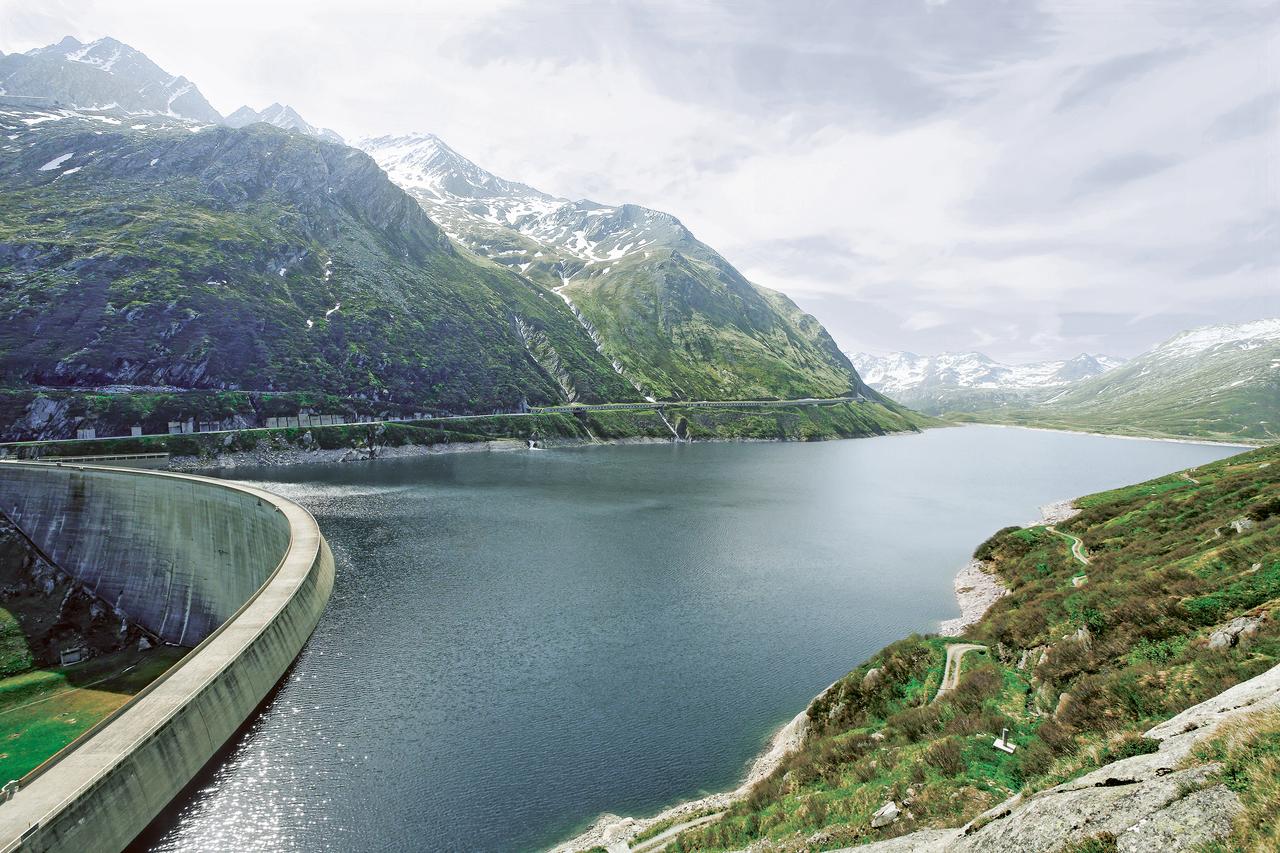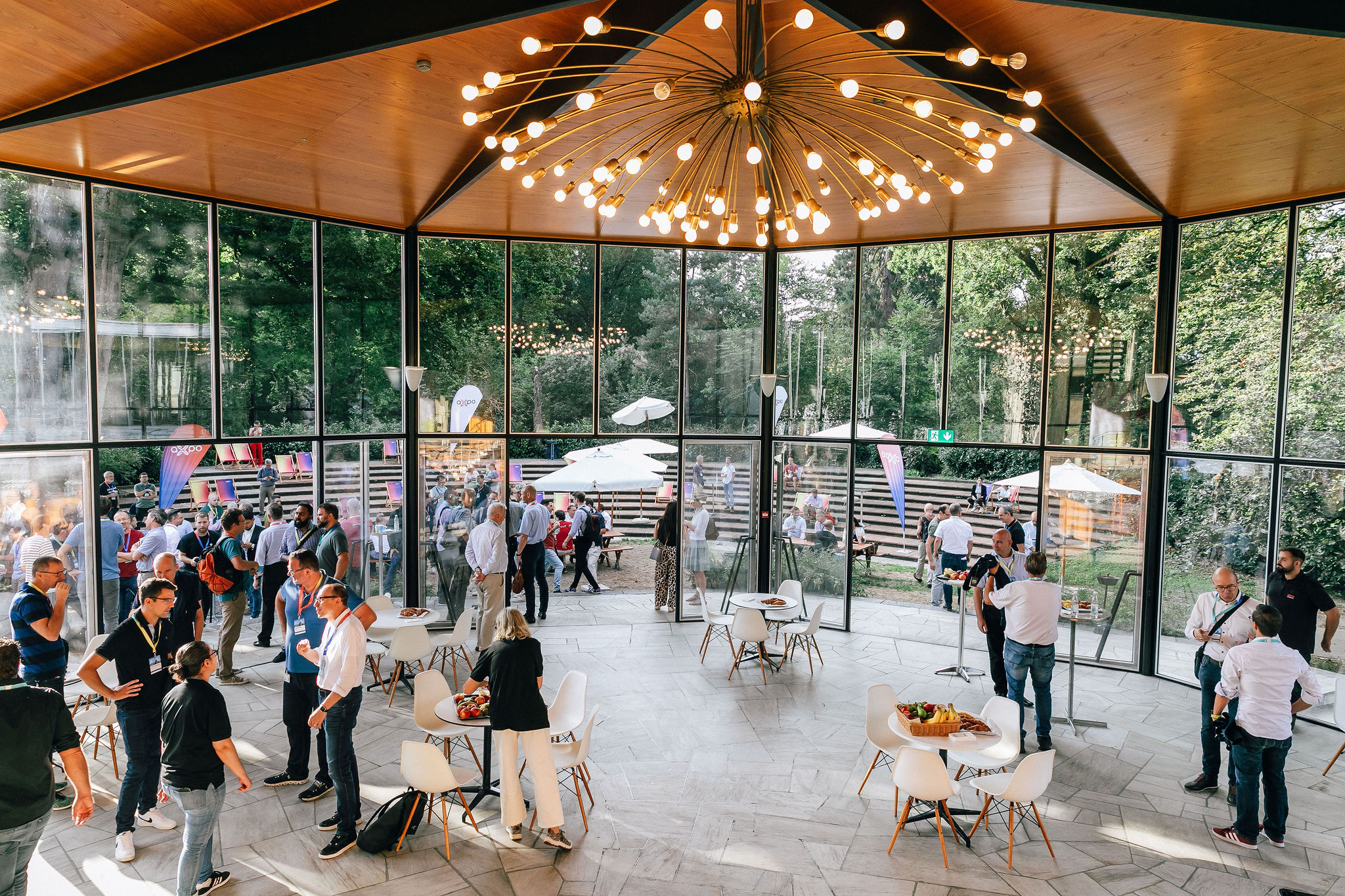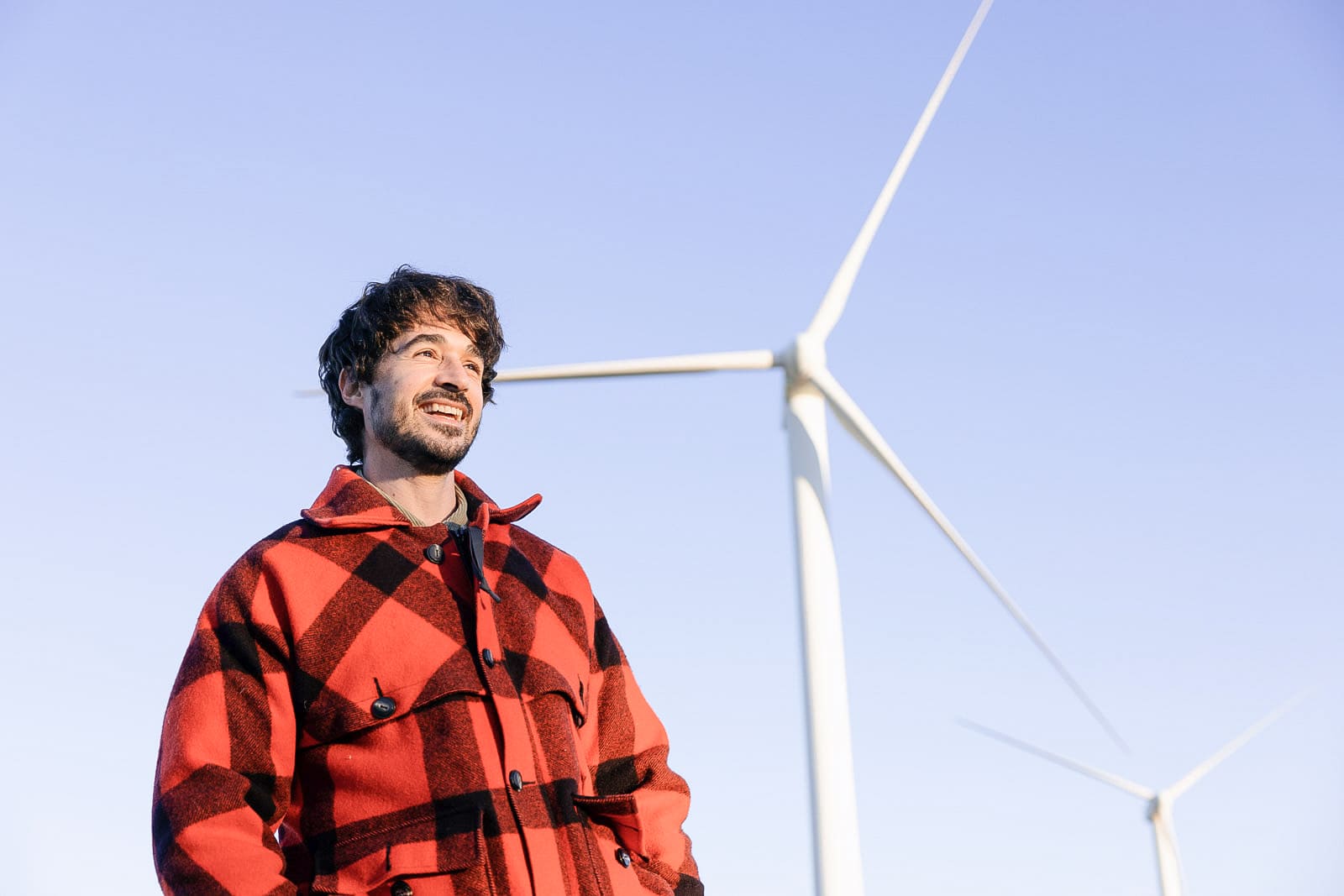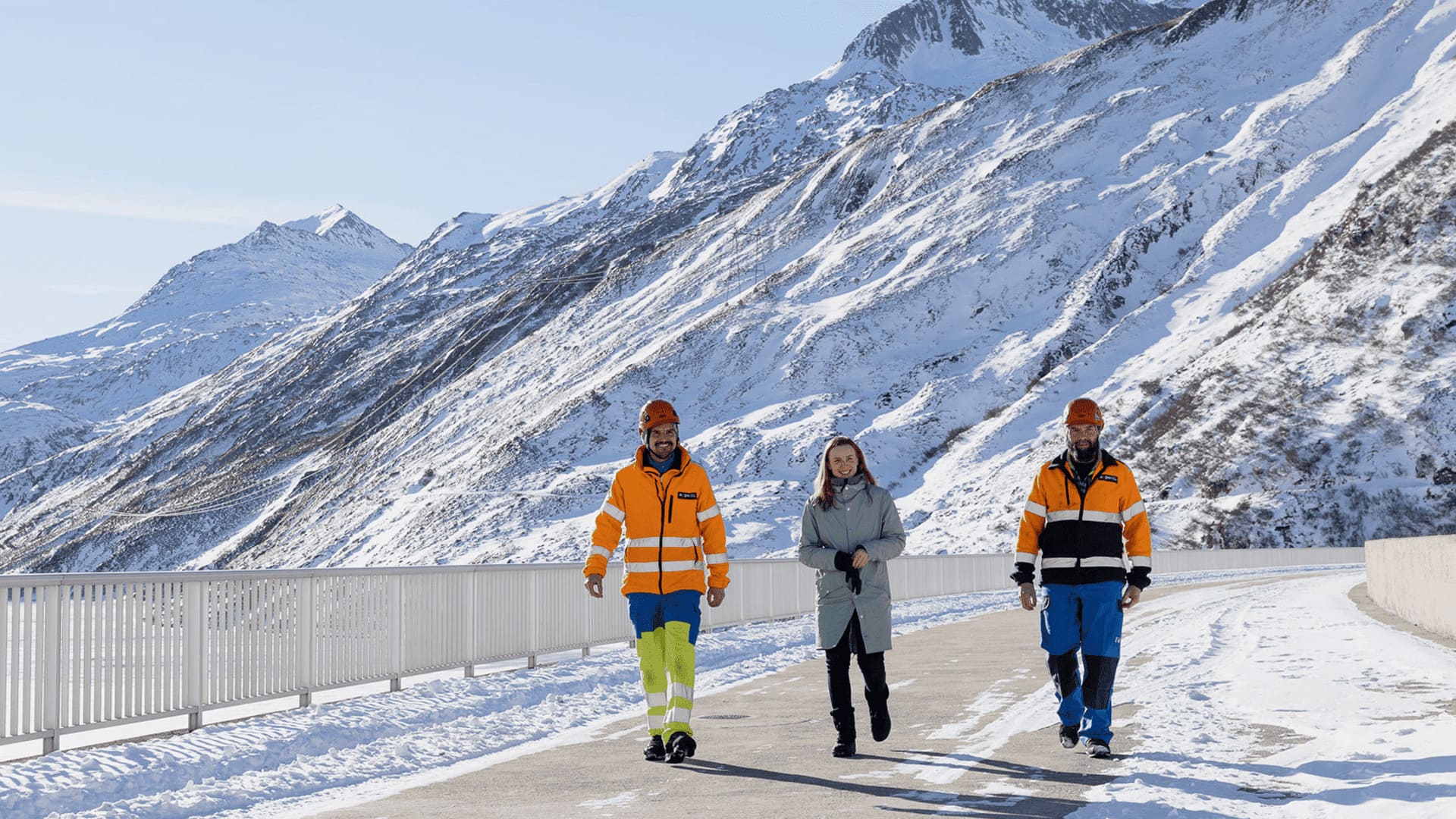05.09.2025 | How It All Began
60 Years Since the Groundbreaking at Beznau
On 6 September 1965, a forward-looking chapter was opened on the small Aare island of Beznau near Döttingen. With the official groundbreaking ceremony for the Beznau Nuclear Power Station, a new era in Swiss energy supply began. Sixty years later, we look back on courage, technological enthusiasm—and a success story that continues to this day. With over 800,000 operating hours, Beznau is now a world record holder.
Switzerland in the 1960s was marked by growth, prosperity, and optimism. The economy was booming, the population was increasing, and electricity consumption rose by double-digit percentages each year. Hydropower, the backbone of electricity production, was increasingly reaching its limits. New solutions were needed to meet the rising demand. In this spirit of optimism, the then NOK (Nordostschweizerische Kraftwerke, now Axpo) made a visionary decision: to build the country’s first commercial nuclear power station. Beznau, an unassuming island in the Aare, offered ideal conditions: stable geology, abundant cooling water, a pre-existing gradient due to the hydropower station, and proximity to the industrial centres of the Swiss Midlands.
A Ceremony with Symbolic Power
6 September 1965 was not just a date on the calendar, but a symbolic moment. Federal councillors, politicians, business leaders, and the public gathered to celebrate the groundbreaking. For many, it marked the beginning of a new era: nuclear energy stood for progress, for reliable and affordable electricity, and for Switzerland’s independence from fossil fuels. Photographs from those days show politicians in hard hats, engineers with shining eyes, and children gazing in awe at the construction machinery. Beznau was a project that was not only built, but truly lived.
Pioneer Work – Swiss Precision Meets American Technology
The Beznau Nuclear Power Station was a technical challenge. The reactor type chosen was a pressurised water reactor from the US company Westinghouse—a proven concept already in use in the USA, but not yet in Europe. The engineers in Döttingen faced enormous challenges: concrete works on an unprecedented scale, components of a size never seen before, and a grid connection that required entirely new dimensions.
Beznau was planned from the outset as a twin-unit station. In addition to NOK, other partners were involved: Westinghouse (reactor), BBC/ABB (turbines), as well as various Swiss and international construction and engineering firms made the construction of the country’s first commercial nuclear power station possible. Built with typical Swiss precision, Beznau’s two reactors went into operation after successful testing—Beznau 1 in 1969, followed by Beznau 2 in 1972. From the very beginning, they made a decisive contribution to security of supply.
Beznau as the Heart of Energy Supply
Sixty years after the groundbreaking, Beznau is much more than just a power station. It is a symbol of reliability. Hardly any facility in Europe can look back on such a long operating history—while maintaining the highest safety standards. Today, Beznau supplies around 6 terawatt-hours of electricity annually. This corresponds to about ten percent of Swiss electricity production—reliably, with low CO₂ emissions, and around the clock.
People at the Centre
Behind Beznau’s success are generations of specialists: engineers, technicians, safety experts, and operators. Many of them have spent their entire careers on the Aare island—and have passed their knowledge on to the next generation.
“The Beznau spirit is something special and can be felt every day,” says plant manager Nicolai Braun. “We are proud to be part of a pioneering plant that continues to make an important contribution to Switzerland.”
Change Through Innovation
The plant was not always online—there were periods of maintenance, fuel element changes, upgrades, or safety reviews. But Beznau has never stood still: over the past decades, the plant has been continuously modernised, reinforced, and adapted to new safety requirements. From digital control systems to modernised cooling systems and comprehensive earthquake and flood protection measures: Axpo’s investments in safety now total over CHF 2.5 billion—demonstrating that a power station can be developed and maintained at the cutting edge for decades. This ongoing modernisation has made Beznau one of the safest nuclear power stations in the world.
Nuclear Energy in the Context of the Energy Transition
Today, when we talk about Beznau, it’s not just about the past, but above all about the future. Climate change presents Switzerland with enormous challenges. Electricity consumption continues to rise—due to electromobility, heat pumps, and digitalisation. At the same time, energy supply must remain CO₂-neutral and independent.
Beznau demonstrates that nuclear energy can play a central role in the energy transition. As a reliable power source, it complements renewables such as solar and wind—and ensures the necessary security of supply. Nuclear power is also climate-friendly. Since Beznau’s commissioning, Axpo has been able to save almost 350 million tonnes of CO₂ emissions.
60 Years Later: Looking Back—and Forward
The 1965 groundbreaking marked the start of a success story that continues to this day. Beznau stands for pioneering spirit, technology, security of supply—and for the people who have supported this power station for decades. Not for nothing have they set records: together, the reactors have logged over 800,000 operating hours—a world record.
Since commissioning, the plant has produced more than 300 terawatt-hours of electricity. That would be enough to supply the whole of Switzerland with electricity for almost five years—day and night.
But the future will bring a new task: Beznau will be decommissioned in 2032/33. This will mark the end of an era—and the beginning of a new phase. The dismantling of a nuclear power station is a task that requires the utmost care, precision, and expertise.
The Beznau nuclear power station will remain an exciting workplace with interesting job opportunities until the mid-2040s. Here too, Beznau will rely on its own employees: on their experience, know-how, and their commitment to keeping safety and the protection of people and the environment at the centre—just as they have done over the past six decades.
On this anniversary, we look back at the groundbreaking of Switzerland’s first commercial nuclear power station and recognise: it was the beginning of a unique success story. Beznau is more than concrete, steel, and technology—it is part of Swiss identity. And it proves to this day: those who show courage can make history.




.jpg)





